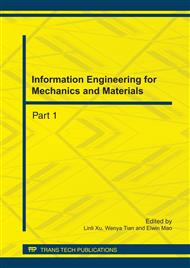p.317
p.322
p.327
p.332
p.339
p.346
p.350
p.355
p.360
Simulation Research on Stress of Polymeric Patterns during Micro Hot Embossing
Abstract:
The properties of polymeric components made by hot embossing are obviously affected by the geometry of the mold such as the duty ratio, the aspect ratio, width to thickness ratio and the mold cavity position. This paper focuses on numerical simulations with isothermal embossing conditions in order to observe the stress distribution and the stress concentration of the polymeric patterns. The simulation results show that stress concentration in the PMMA resist accumulates at the contact corner between the mold and the polymer, and the location of the stress distribution is mainly on the profile of the replicated patterns. Small duty ratio will result in high stress concentration at the corner of the replicated components. The stress concentration also increases rapidly while the aspect ratio of the mold increases. The thicker the polymer is, the more difficult the adequate flow of the polymer becomes, and the stress concentration rises up. A stress barrier can be used in the mold in order to reduce the stress concentration in the middle of the replicated polymeric patterns.
Info:
Periodical:
Pages:
339-345
Citation:
Online since:
July 2011
Authors:
Price:
Сopyright:
© 2011 Trans Tech Publications Ltd. All Rights Reserved
Share:
Citation:


